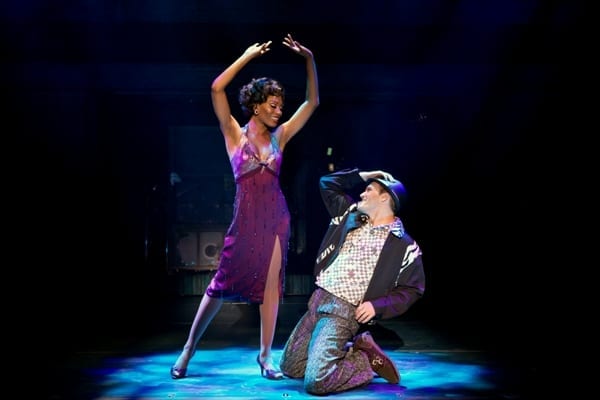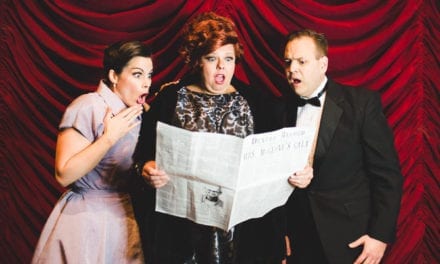SALT LAKE CITY — Memphis is a popular Broadway musical that won the coveted Tony award for Best Musical in 2010. The story, based on actual events, follows the music scene of Memphis, Tennessee, during the turbulent late 1950’s. The main character, Huey Calhoun, is a high school dropout that adores the underground rhythm and blues music played by the African American community. In particular, he attends a night club where he hears Felicia singing and is so impressed by her talent that he swears he will get her on the radio. The story also explores the difficulties of an interracial relationships in the deep south at that time and how a person’s choices are often determined by the color of their skin.
As a touring company, the cast of Memphis is full of experienced and talented actors, as well as a strong crew. Music coordinator John Mezzio put together an excellent team of musicians to recreate the music scene that authors David Bryan and Joe DiPietro worked so hard to develop. The set design and costuming where also very impressive. The set included many different locations, from the run down home of Huey and his mother, to the night club, to the radio station. Set designer David Gallo, who has won a Tony award for his work on The Drowsy Chaperone, worked hard to create a set that was appropriate for the time period. Costume designer Paul Tazewell’s costumes showed the same attention to the time period, but also had subtle differences among character’s in the story. For instance, Huey’s conservative mother was dressed in quite a different fashion than Felicia, yet they were both true to the time period and location.
The main character, Huey, was skillfully played by Joey Elrose. Huey is a lovable character in the way he naively crosses social boundaries, and Elrose was able to masterfully capture that innocence. Elrose also is a skillful dancer and singer, which was especially shown in the song “Memphis Lives in Me,” where his vocal skills combined with the emotions of the situation lead to a very moving performance. Pat Sibley, as Huey’s mother (known just as Mama), portrayed a very realistic mother terrified of the changes her son seems to be a part of. Yet, Mama eventually was able accept that change may not be so bad after all—a nice character development that Sibley skillfully showed. Sibley has a very comedic yet poignant number, “Change Don’t Come Easy” that had me cheering by the end.
Felicia, played beautifully by Jasmin Richardson, has several moments in the show that were memorable. Perhaps her most moving performance was the song “Colored Woman,” a pivotal part in the plot of the show, but also the moment where I was able to see both the strength and the vulnerability in her voice. The power that Felicia had by the time the number was done was unmistakeable. The empathy that it takes to understand the limitations an African American woman faced in the 1950’s, and then portray that empathy to the audience in a way that is as moving as Richardson’s performance was shows a great deal of strength, capability, and talent. However, the best moment of the night was the final number of the first act, entitled “Say A Prayer.” In that song, there is a shining moment for a minor character, Gator, played by Avionce Hoyles. To say more would ruin the surprise. However the beautiful and haunting moment that Hoyles opened his mouth reduced me to tears, as well as other audience members that I was sitting by.
The production as a whole, especially its historical message and modern relevance make it obvious why Memphis was honored with the Tony Award. There is a moment in the show when Felicia explains that Huey can be white whenever he wants to be, and any time she steps out the door, she is still a black woman. Memphis reminded me that society still need to be careful about the judgments we place on one another.








